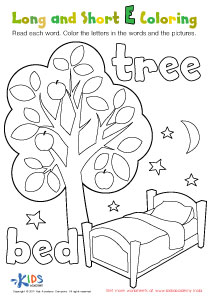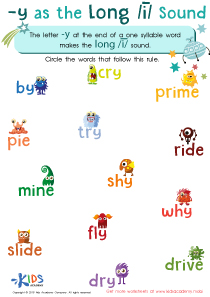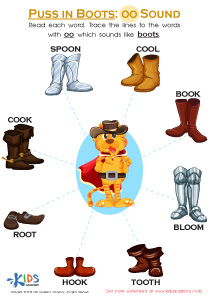Silent Vowels Worksheets for Ages 6-7
4 filtered results
-
From - To
Unlock the mystery of silent vowels with our expertly crafted worksheets, specifically designed for children ages 6-7. Our Silent Vowels worksheets offer a fun and engaging way for young learners to grasp the concept of silent vowels in words, a fundamental skill in their reading journey. Through a variety of activities tailored for beginners, children will practice and reinforce their understanding, improving their reading fluency and confidence. Perfect for both classroom and at-home learning, these worksheets are an essential tool in building a solid foundation in phonics. Dive into the world of silent vowels with our worksheets and watch your child's literacy skills flourish!
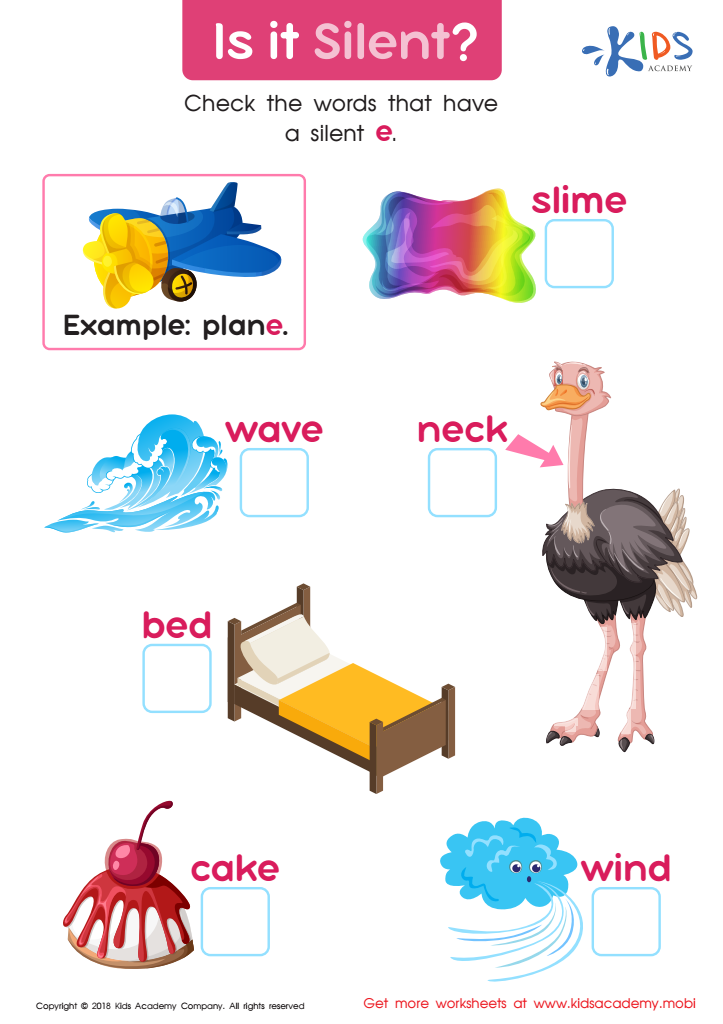

Is It Silent? Worksheet
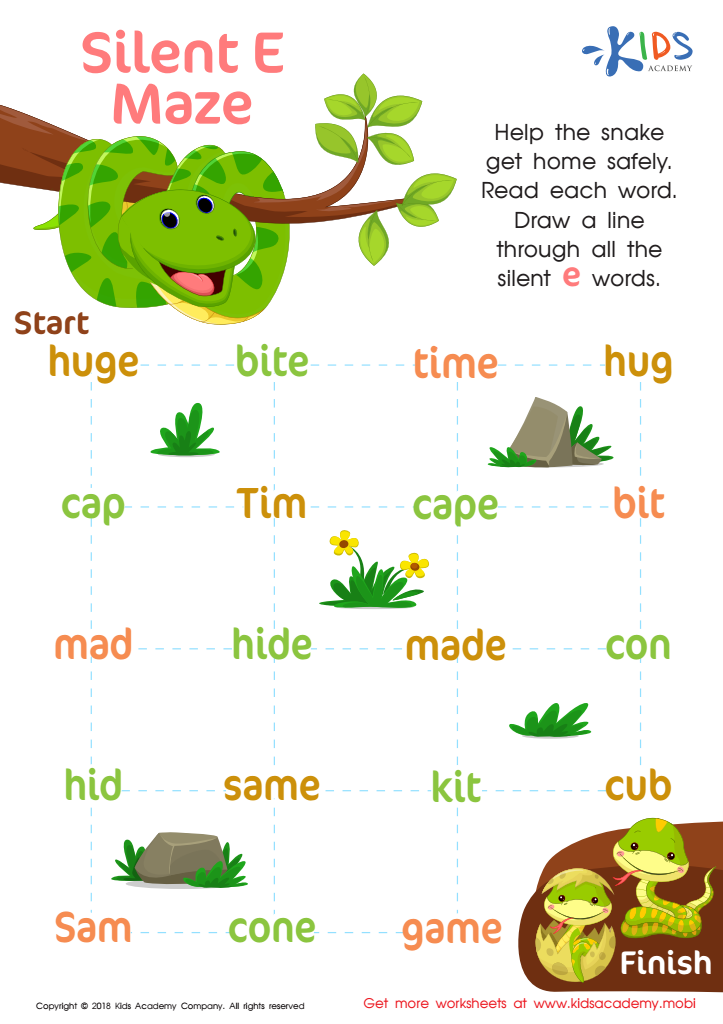

Silent E Maze Worksheet
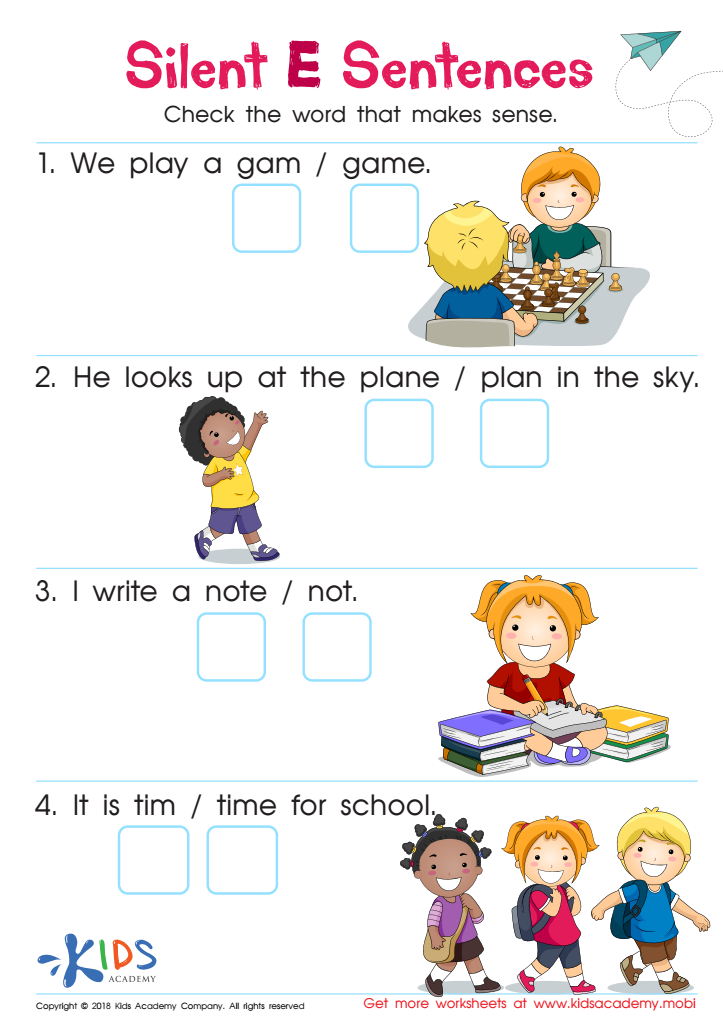

Silent E Sentences Worksheet
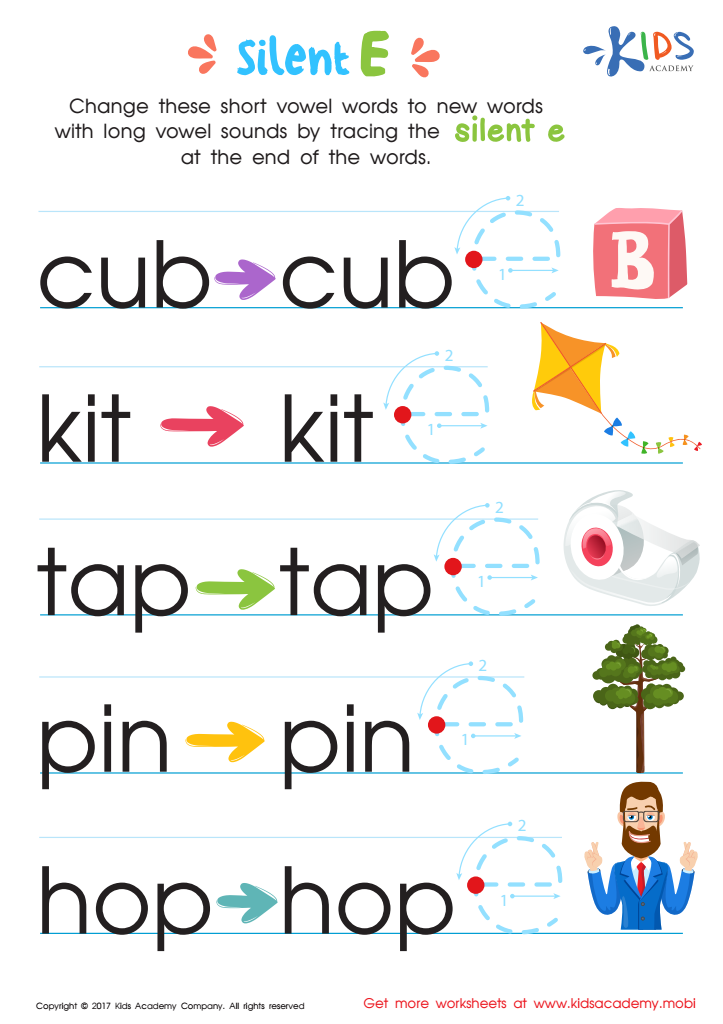

Silent E Words Worksheet
Silent Vowels worksheets, meticulously crafted for Ages 6-7, serve as a pivotal educational tool in the foundational years of reading and spelling. At this age, children are expanding their vocabulary and beginning to understand the complexities of the English language, making it the perfect time to introduce the concept of silent vowels. These worksheets specifically target the silent vowels in words, which are often the trickiest for young learners to grasp due to their lack of audible pronunciation.
The utility of Silent Vowels worksheets for Ages 6-7 lies in their ability to blend fun with learning. Through engaging exercises, children are encouraged to identify and practice silent vowel words, enhancing both their reading fluency and spelling accuracy. These activities not only reinforce classroom learning but also bolster children's confidence in navigating the nuances of English phonetics.
Moreover, Silent Vowels worksheets are designed with young learners in mind, featuring vibrant illustrations and interactive tasks that cater to the developmental stage of 6-7-year-olds. This age-specific approach ensures that children remain engaged and motivated throughout their learning process.
In summary, Silent Vowels worksheets for Ages 6-7 are an essential resource for developing a solid foundation in English literacy. They demystify the complexities of silent vowels, making reading and spelling more accessible and enjoyable for young learners.

 Assign to the classroom
Assign to the classroom


